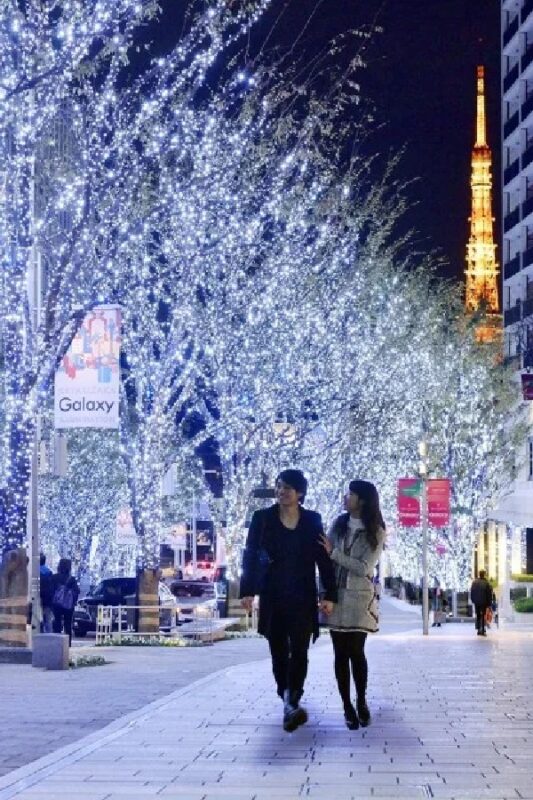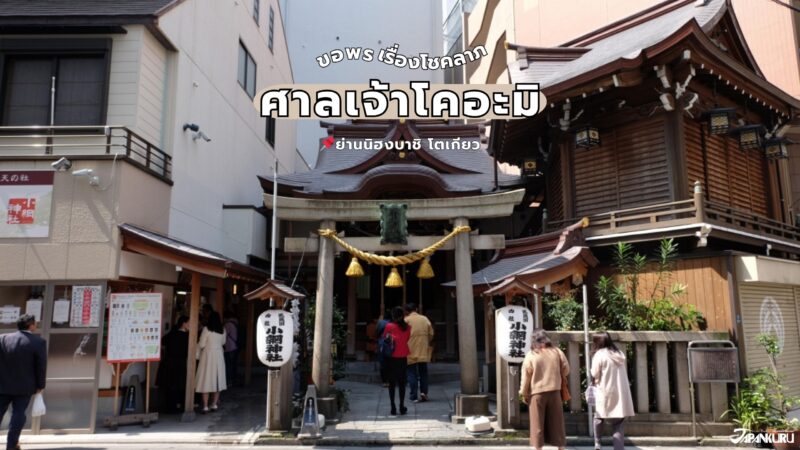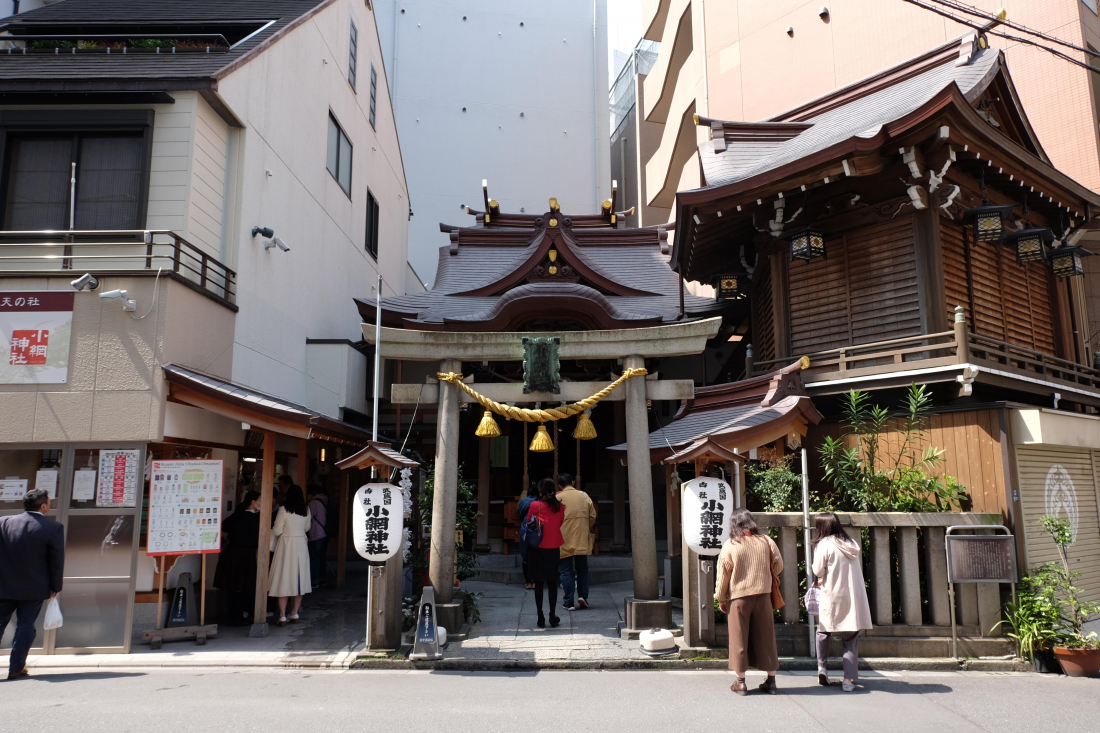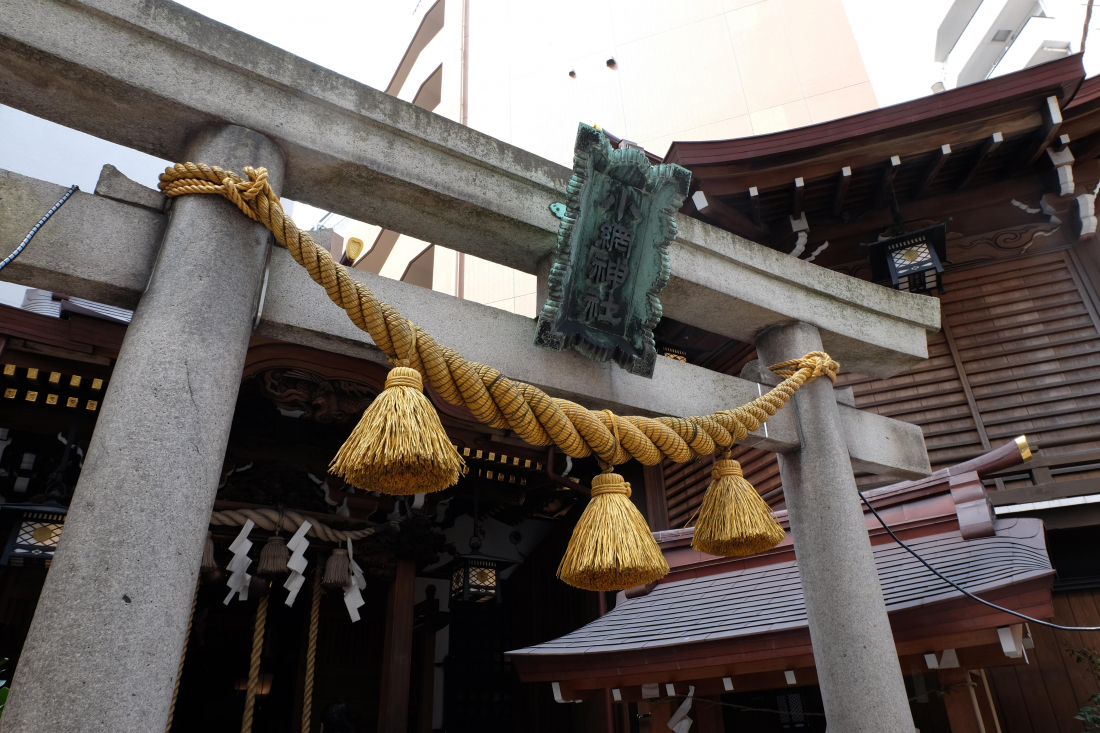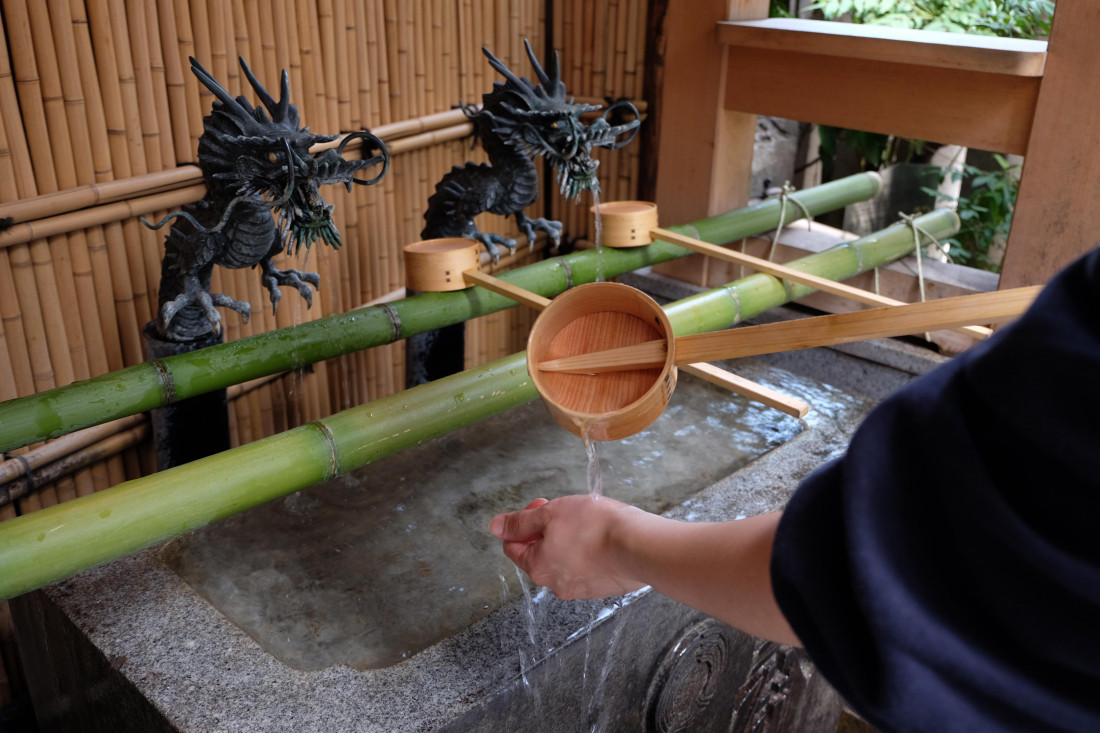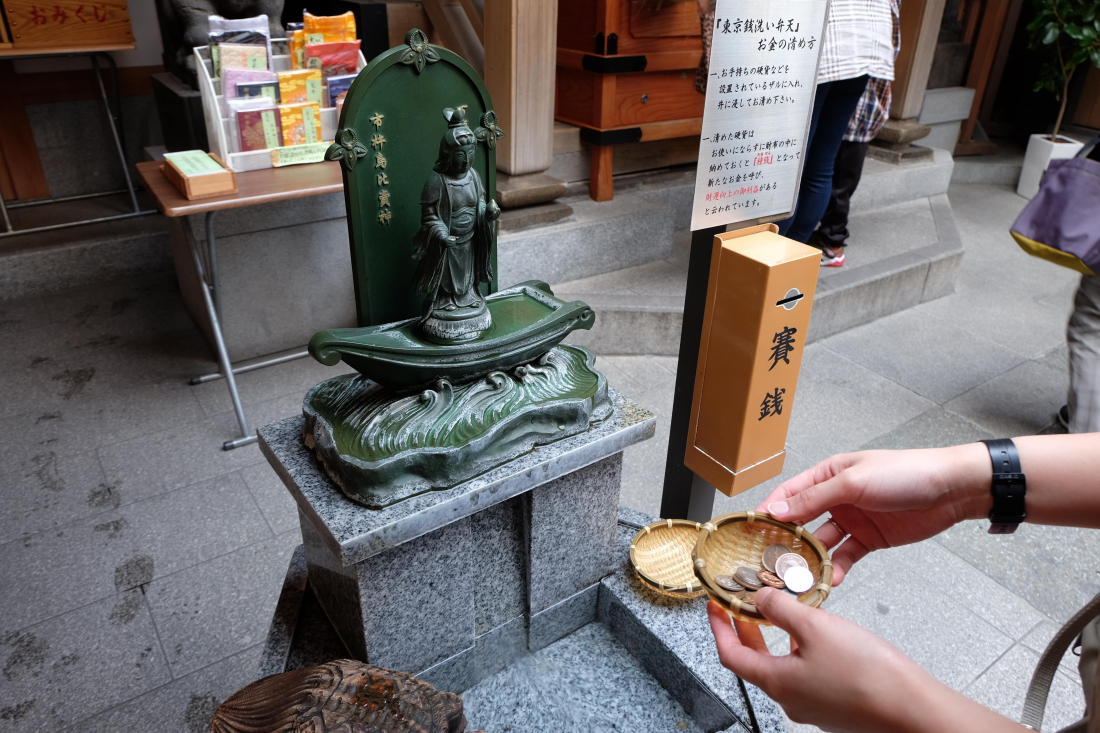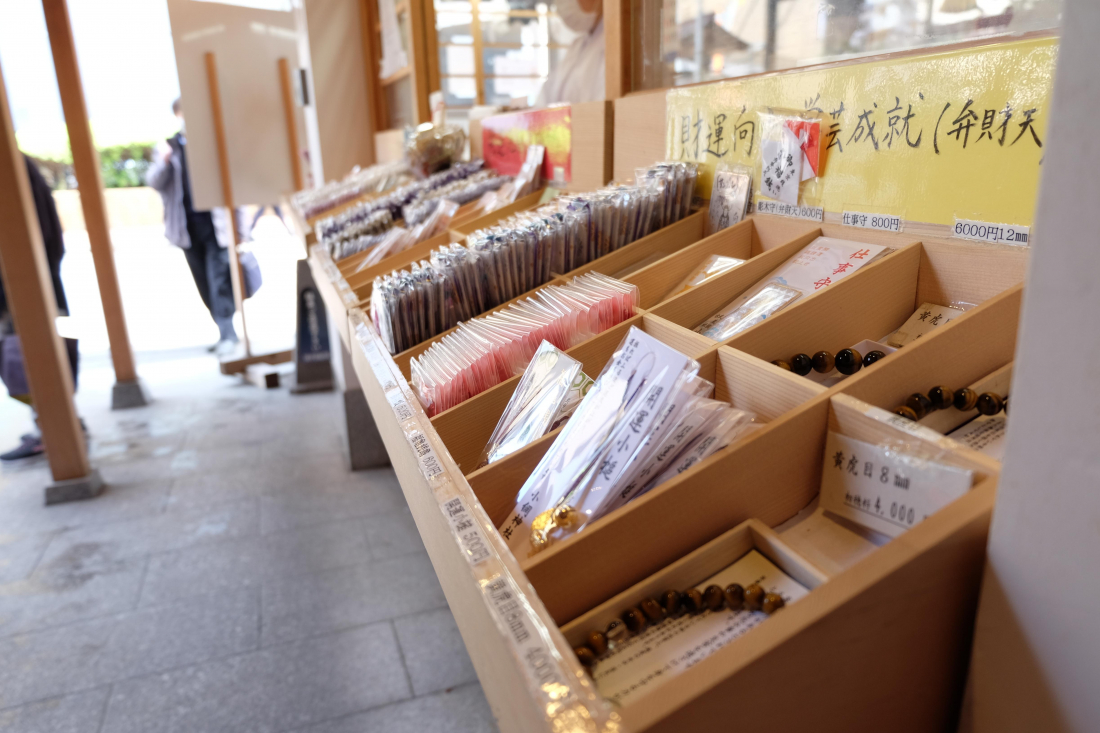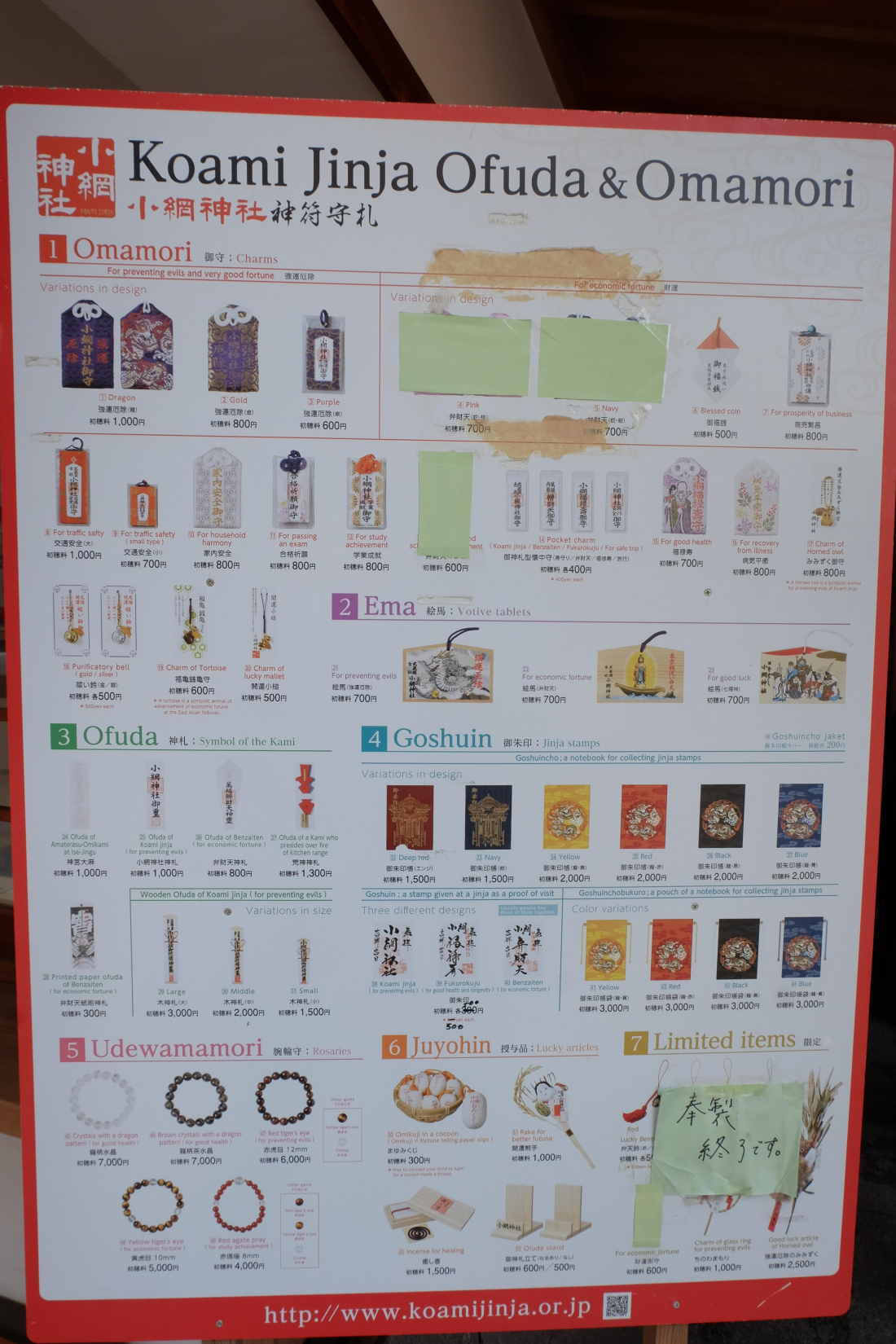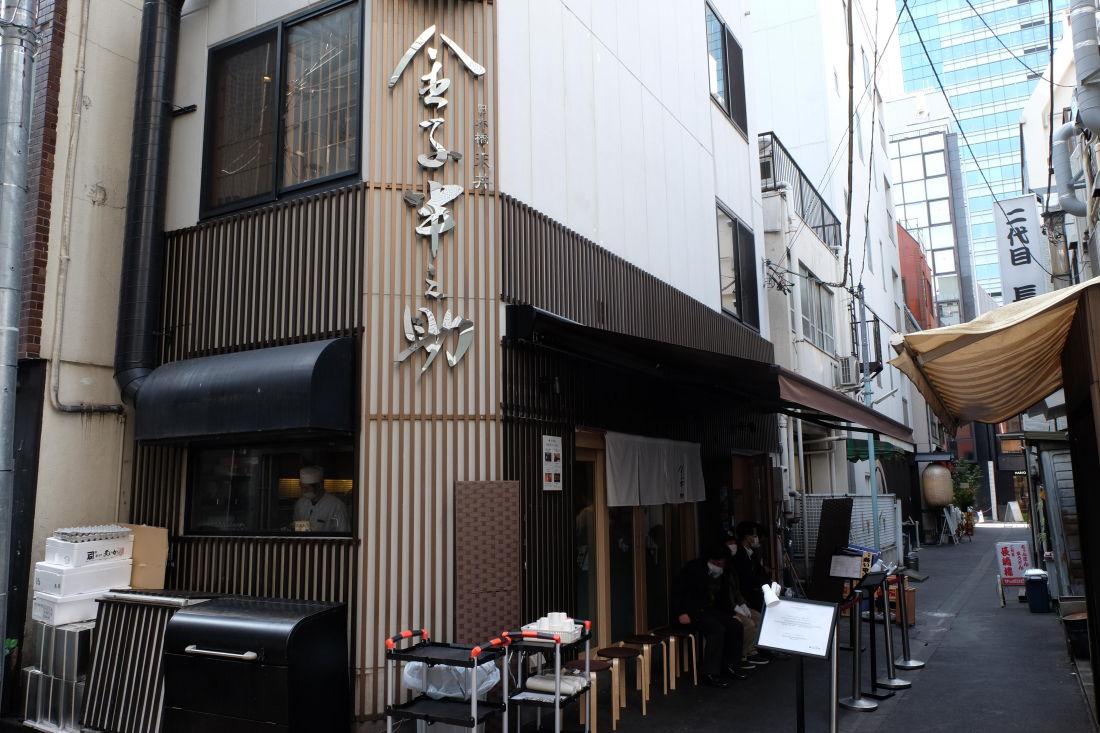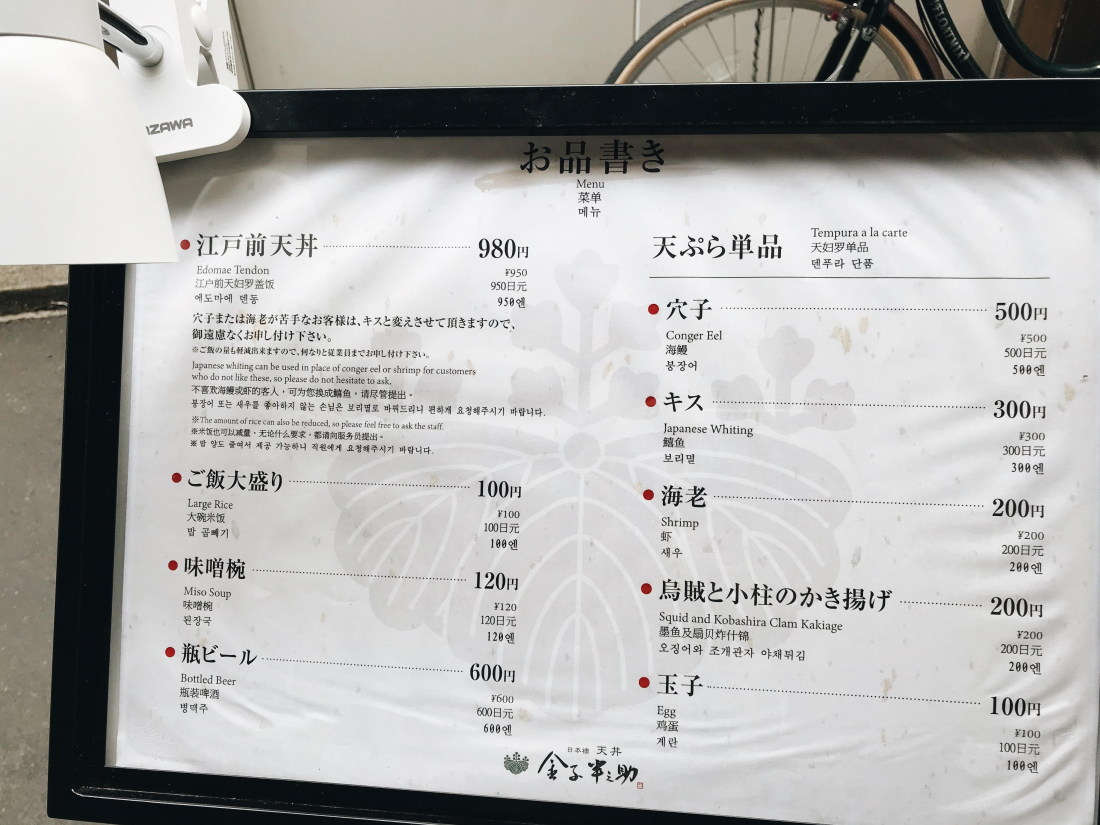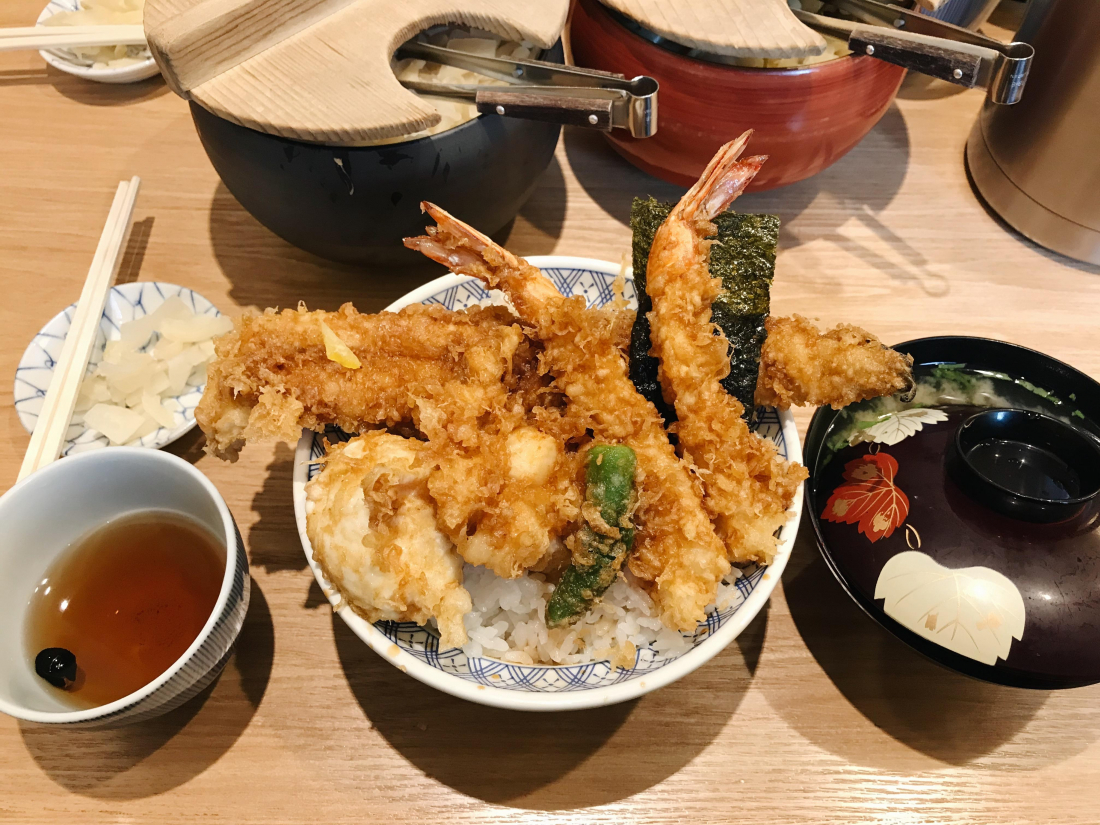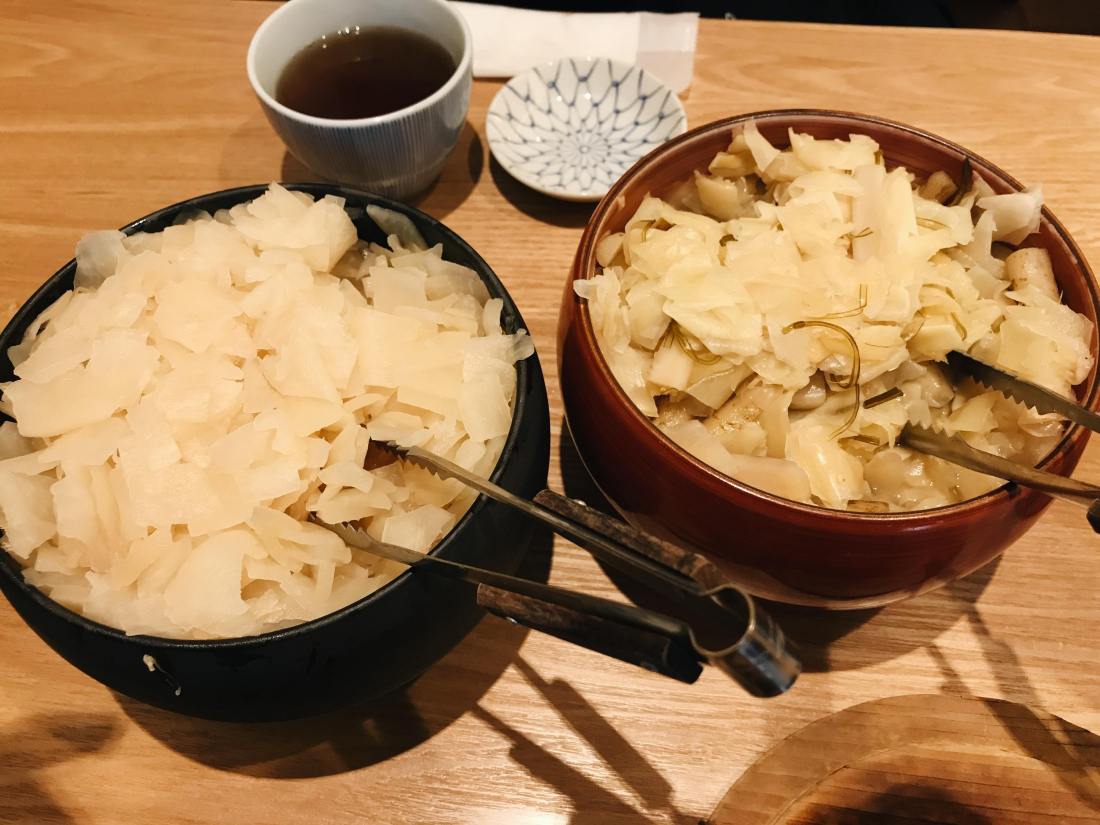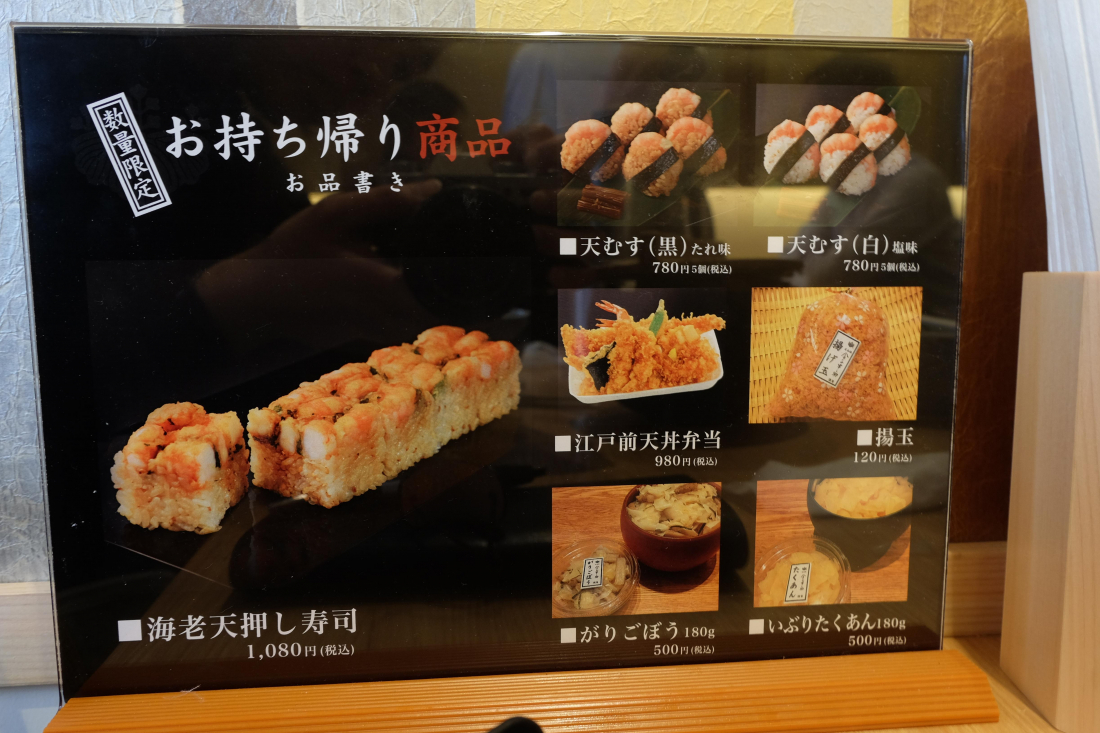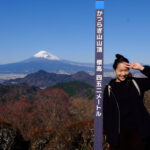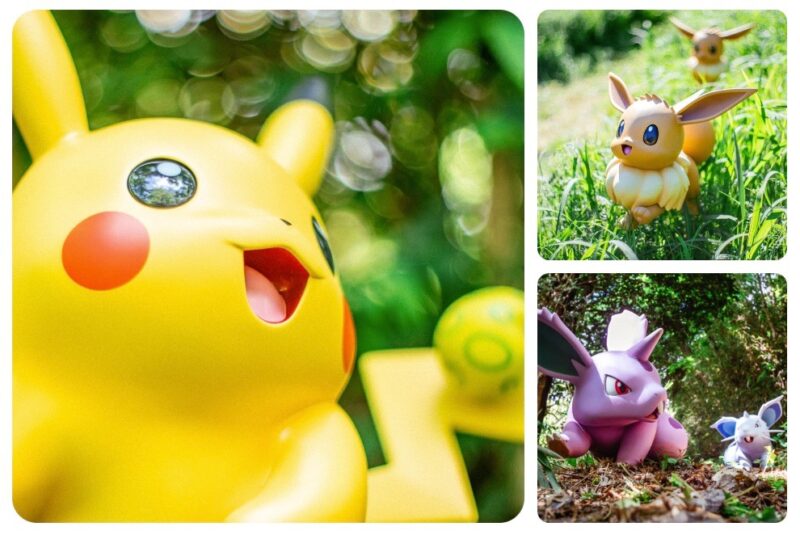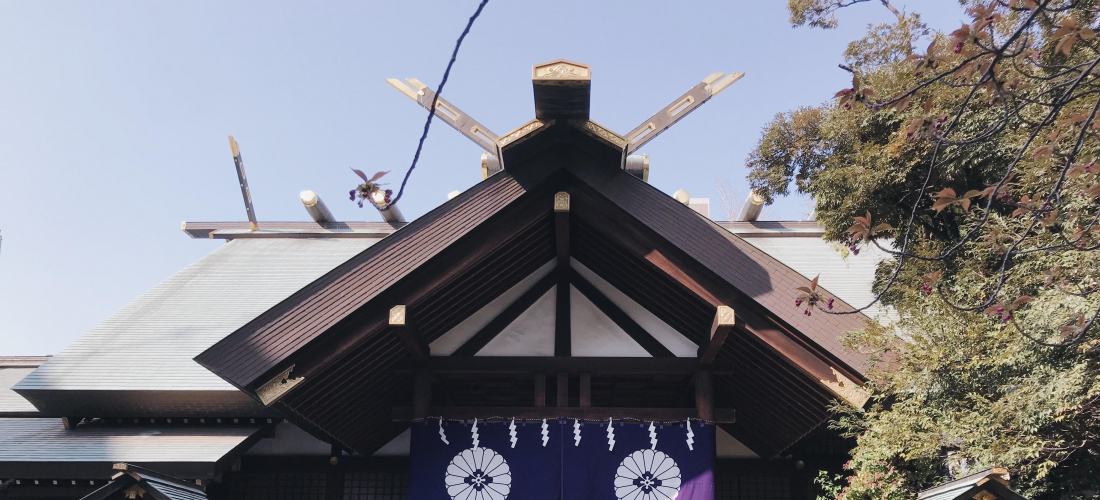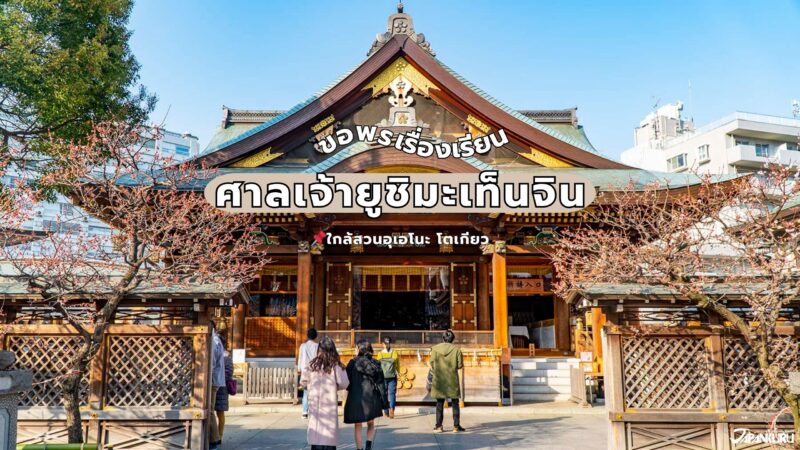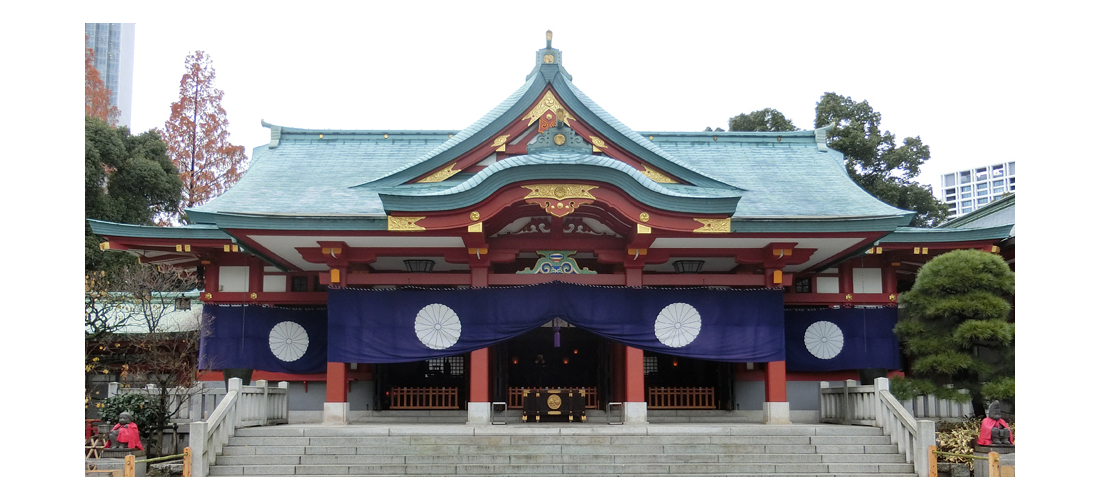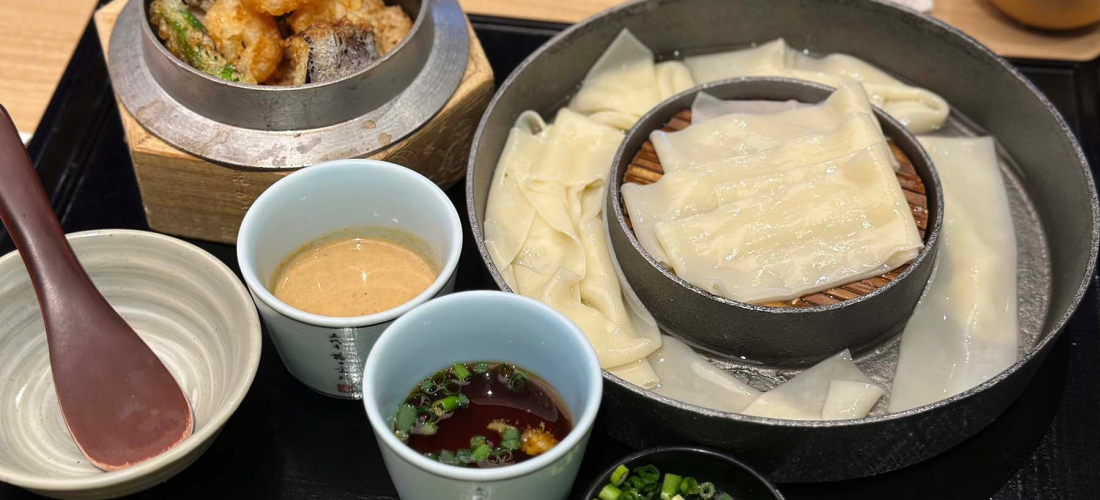Join me on a trip to one of my three favorite shrines in Tokyo, each good for a different kind of luck!
Today we're heading to the second of my three favorite shrines in Tokyo, the Koami Shrine (小網神社) in Tokyo's Chuo Ward, just four minutes from Ningyocho Station. Between the station and the shrine, this part of Tokyo is mostly unremarkable office buildings and some apartments, and it seems like an unlikely spot for a Shinto shrine. But don't worry about searching out this little shrine hidden between big, nondescript Tokyo buildings! It's actually a pretty popular spot, where people flow in and out of the area to make their prayers. It's a cozy little shrine, but it's not uncommon for the line to get so long that it stretches out onto the street, which makes it especially easy to spot from afar!
Koami Shrine has a bit of a fuzzy past, and some say that it's been standing for as long as 1,000 years, but most experts agree that it was established slightly more recently in 1466. The shrine has successfully survived centuries of fires, wars, and other destruction, so it's no wonder it's known as a lucky power spot!
On the way into any shrine, many visitors will show respect by bowing before even entering through the shrine gate.
First things first! Before going to pray, you wash your hands at the fountain by taking a ladle and pouring water on your left hand, then your right hand, then you pour a little water in your cupped left hand to rinse your mouth, before pouring water on your left hand again, and finally finishing by pouring any remaining water down the ladle itself to rinse it off as well.
Then you can go line up to pray at the shrine, tossing in 5 yen, bowing, and clapping exactly the same way I wrote about last time! One of the gods enshrined at Koami is said to bring prosperity to the businesses of those who come to pray, so you'll definitely want to stop by if you need a little extra luck in that department!
If you're curious about what your future looks like, the shrine offers omikuji (おみくじ, fortunes) in English, too!
If you're determined to improve your finances, don't forget to stop at this little fountain before leaving! Koami Shrine is a "zeniarai benten" (銭洗弁天), and it's said that if you cleanse and purify your coins in the water before returning them to your wallet, the coins will be joined by many more in the future.
Place a coin (or many) in one of the small baskets, swish it around in the purifying water, and then return the freshly blessed small change to your wallet for some luck with your finances.
Right next door are some very popular omamori amulets and other charms, available for purchase.
There are quite a few options, and Koami Shrine actually has a guide to each of the items in English! All I've got is anecdotal evidence, but another Thai acquaintance of mine said her finances seemed much more flexible after she came to Japan and prayed at this little shrine in Chuo Ward. Of course, what you believe is up to you, and we can also credit her business's success to all the effort, perseverance, and determination she put into it!
Is your money washed, and are you ready to go? Before you leave the area, grab a bite to eat! About 8 minutes from the shrine you'll find Tokyo's busy Nihonbashi area, a major business district with tall office buildings and lots of busy office-workers rushing around in suits. Also in Nihonbashi is Kaneko Hannosuke, or more properly "Nihonbashi Tendon Kaneko Hannosuke" (日本橋天丼金子半之助), which serves tendon (天丼, tempura rice bowls, not like in your limbs) so delicious that the shop's name and the shop's line will both surprise you with their length.
Curious, I asked the staff how long the wait could get, when the shop was at its busiest. Apparently, people sometimes wait as long as 1 ~ 1 1/2 hours for this tendon! Fortunately, I arrived in the middle of the afternoon, so I only waited about 10 minutes to get in.
The go-to meal here is Edo-mae tendon, traditional Tokyo-style tempura rice bowls, and really the only other items on the menu are miso soup and extra tempura toppings (or extra-large servings of rice)!
The tendon includes a variety of crispy, golden-brown tempura, like anago eel, shrimp, and squid all freshly delivered from Tokyo's major Toyosu fish market every morning. This bowl also has a tempura-fried soft-boiled "onsen egg," and a pepper. All of this sits on a bed of steaming white rice, topped finally with a special sweet-and-savory tendon sauce.
For such a popular restaurant, especially, I think this restaurant is a great deal. The tendon is 980 yen for a big bowl that left me very full!
If you want to jazz up your tendon even more, though, the restaurant's pickled vegetables are equally delicious. The black bowl is full of sweet-and-salty iburitaku pickled daikon radish, and the red bowl is garigobo, a mix of pickled ginger and burdock root! The fresh pickled flavors are a perfect match for the shop's rich, oily tendon.
You can get it to go, as well, and their takeout menu includes some fun tempura sushi and rice balls!
Feeling lucky already? Now that your finances are all set, are you ready to look for love? My last shrine recommendation is perfect for anyone hoping for a little romance, or maybe just a relationship boost, so I'll see you there!
For more info and updates from Japan, check Japankuru for new articles, and don't forget to follow us on twitter, instagram, and facebook!
Original Author: Pin
English Edition: Sophia Appelbaum
Details
NAME:Koami Shrine (小網神社)
16-23 Nihonbashikoamicho, Chuo City, Tokyo
Kaneko Hannosuke, 1-11-15 Nihonbashimuromachi, Chuo City, Tokyo
I've lived in Tokyo for a few years now, and I love wandering Japan looking for good food, lovely new places, and the best tourist attractions throughout the country.
COMMENT
FEATURED MEDIA
VIEW MORE 
A New Tokyo Animal Destination: Relax & Learn About the World’s Animals in Japan
#pr #japankuru #anitouch #anitouchtokyodome #capybara #capybaracafe #animalcafe #tokyotrip #japantrip #카피바라 #애니터치 #아이와가볼만한곳 #도쿄여행 #가족여행 #東京旅遊 #東京親子景點 #日本動物互動體驗 #水豚泡澡 #東京巨蛋城 #เที่ยวญี่ปุ่น2025 #ที่เที่ยวครอบครัว #สวนสัตว์ในร่ม #TokyoDomeCity #anitouchtokyodome

Shohei Ohtani Collab Developed Products & Other Japanese Drugstore Recommendations From Kowa
#pr #japankuru
#kowa #syncronkowa #japanshopping #preworkout #postworkout #tokyoshopping #japantrip #일본쇼핑 #일본이온음료 #오타니 #오타니쇼헤이 #코와 #興和 #日本必買 #日本旅遊 #運動補充能量 #運動飲品 #ช้อปปิ้งญี่ปุ่น #เครื่องดื่มออกกำลังกาย #นักกีฬา #ผลิตภัณฑ์ญี่ปุ่น #อาหารเสริมญี่ปุ่น

도쿄 근교 당일치기 여행 추천! 작은 에도라 불리는 ‘가와고에’
세이부 ‘가와고에 패스(디지털)’ 하나면 편리하게 이동 + 가성비까지 완벽하게! 필름카메라 감성 가득한 레트로 거리 길거리 먹방부터 귀여움 끝판왕 핫플&포토 스폿까지 총집합!
Looking for day trips from Tokyo? Try Kawagoe, AKA Little Edo!
Use the SEIBU KAWAGOE PASS (Digital) for easy, affordable transportation!
Check out the historic streets of Kawagoe for some great street food and plenty of picturesque retro photo ops.
#pr #japankuru #도쿄근교여행 #가와고에 #가와고에패스 #세이부패스 #기모노체험 #가와고에여행 #도쿄여행코스 #도쿄근교당일치기 #세이부가와고에패스
#tokyotrip #kawagoe #tokyodaytrip #seibukawagoepass #kimono #japantrip

Hirakata Park, Osaka: Enjoy the Classic Japanese Theme Park Experience!
#pr #japankuru #hirakatapark #amusementpark #japantrip #osakatrip #familytrip #rollercoaster #retrôvibes #枚方公園 #大阪旅遊 #關西私房景點 #日本親子旅行 #日本遊樂園 #木造雲霄飛車 #히라카타파크 #สวนสนุกฮิราคาตะพาร์ค

🍵Love Matcha? Upgrade Your Matcha Experience With Tsujiri!
・160년 전통 일본 말차 브랜드 츠지리에서 말차 덕후들이 픽한 인기템만 골라봤어요
・抹茶控的天堂!甜點、餅乾、飲品一次滿足,連伴手禮都幫你列好清單了
・ส่องมัทฉะสุดฮิต พร้อมพาเที่ยวร้านดังในอุจิ เกียวโต
#pr #japankuru #matcha #matchalover #uji #kyoto #japantrip #ujimatcha #matchalatte #matchasweets #tsujiri #말차 #말차덕후 #츠지리 #교토여행 #말차라떼 #辻利抹茶 #抹茶控 #日本抹茶 #宇治 #宇治抹茶 #日本伴手禮 #抹茶拿鐵 #抹茶甜點 #มัทฉะ #ของฝากญี่ปุ่น #ชาเขียวญี่ปุ่น #ซึจิริ #เกียวโต

・What Is Nenaito? And How Does This Sleep Care Supplement Work?
・你的睡眠保健品——認識「睡眠茶氨酸錠」
・수면 케어 서플리먼트 ‘네나이토’란?
・ผลิตภัณฑ์เสริมอาหารดูแลการนอน “Nenaito(ネナイト)” คืออะไร?
#pr #japankuru #sleepcare #japanshopping #nenaito #sleepsupplement #asahi #睡眠茶氨酸錠 #睡眠保健 #朝日 #l茶胺酸 #日本藥妝 #日本必買 #일본쇼핑 #수면 #건강하자 #네나이토 #일본영양제 #อาหารเสริมญี่ปุ่น #ช้อปปิ้งญี่ปุ่น #ร้านขายยาญี่ปุ่น #ดูแลตัวเองก่อนนอน #อาซาฮิ

Japanese Drugstore Must-Buys! Essential Items from Hisamitsu® Pharmaceutical
#PR #japankuru #hisamitsu #salonpas #feitas #hisamitsupharmaceutical #japanshopping #tokyoshopping #traveltips #japanhaul #japantrip #japantravel

Whether you grew up with Dragon Ball or you just fell in love with Dragon Ball DAIMA, you'll like the newest JINS collab. Shop this limited-edition Dragon Ball accessory collection to find some of the best Dragon Ball merchandise in Japan!
>> Find out more at Japankuru.com! (link in bio)
#japankuru #dragonball #dragonballdaima #animecollab #japanshopping #jins #japaneseglasses #japantravel #animemerch #pr

This month, Japankuru teamed up with @official_korekoko to invite three influencers (originally from Thailand, China, and Taiwan) on a trip to Yokohama. Check out the article (in Chinese) on Japankuru.com for all of their travel tips and photography hints - and look forward to more cool collaborations coming soon!
【橫濱夜散策 x 教你怎麼拍出網美照 📸✨】
每次來日本玩,是不是都會先找旅日網紅的推薦清單?
這次,我們邀請擁有日本豐富旅遊經驗的🇹🇭泰國、🇨🇳中國、🇹🇼台灣網紅,帶你走進夜晚的橫濱!從玩樂路線到拍照技巧,教你怎麼拍出最美的夜景照。那些熟悉的景點,換個視角說不定會有新發現~快跟他們一起出發吧!
#japankuru #橫濱紅磚倉庫 #汽車道 #中華街 #yokohama #japankuru #橫濱紅磚倉庫 #汽車道 #中華街 #yokohama #yokohamaredbrickwarehouse #yokohamachinatown

If you’re a fan of Vivienne Westwood's Japanese designs, and you’re looking forward to shopping in Harajuku this summer, we’ve got important news for you. Vivienne Westwood RED LABEL Laforet Harajuku is now closed for renovations - but the grand reopening is scheduled for July!
>> Find out more at Japankuru.com! (link in bio)
#japankuru #viviennewestwood #harajuku #omotesando #viviennewestwoodredlabel #viviennewestwoodjapan #비비안웨스트우드 #오모테산도 #하라주쿠 #日本購物 #薇薇安魏斯伍德 #日本時尚 #原宿 #表參道 #japantrip #japanshopping #pr

Ready to see TeamLab in Kyoto!? At TeamLab Biovortex Kyoto, the collective is taking their acclaimed immersive art and bringing it to Japan's ancient capital. We can't wait to see it for ourselves this autumn!
>> Find out more at Japankuru.com! (link in bio)
#japankuru #teamlab #teamlabbiovortex #kyoto #kyototrip #japantravel #artnews
Photos courtesy of teamLab, Exhibition view of teamLab Biovortex Kyoto, 2025, Kyoto ® teamLab, courtesy Pace Gallery

Japanese Makeup Shopping • A Trip to Kamakura & Enoshima With Canmake’s Cool-Toned Summer Makeup
#pr #canmake #enoshima #enoden #에노시마 #캔메이크 #japanesemakeup #japanesecosmetics

⚔️The Robot Restaurant is gone, but the Samurai Restaurant is here to take its place. Check it out, and don't forget your coupon!
🍣신주쿠의 명소 로봇 레스토랑이 사무라이 레스토랑으로 부활! 절찬 쿠폰 발급중
💃18歲以上才能入場的歌舞秀,和你想的不一樣!拿好優惠券去看看~
#tokyo #shinjuku #samurairestaurant #robotrestaurant #tokyotrip #도쿄여행 #신주쿠 #사무라이레스토랑 #이색체험 #할인이벤트 #歌舞伎町 #東京景點 #武士餐廳 #日本表演 #日本文化體驗 #japankuru #japantrip #japantravel #japanlovers #japan_of_insta

Japanese appliance & electronics shopping with our KOJIMA x BicCamera coupon!
用JAPANKURU的KOJIMA x BicCamera優惠券買這些正好❤️
코지마 x 빅 카메라 쿠폰으로 일본 가전 제품 쇼핑하기
#pr #japankuru #japanshopping #kojima #biccamera #japaneseskincare #yaman #dji #osmopocket3 #skincaredevice #日本購物 #美容儀 #相機 #雅萌 #日本家電 #일본여행 #면세 #여행꿀팁 #일본쇼핑리스트 #쿠폰 #일본쇼핑 #일본브랜드 #할인 #코지마 #빅카메라 #japankurucoupon
MAP OF JAPAN
SEARCH BY REGION

LATEST
VIEW MOREEVENT CALENDAR
VIEW MORE